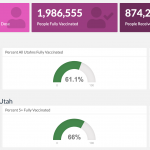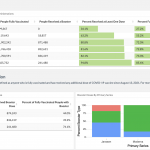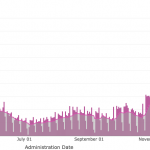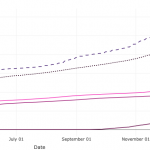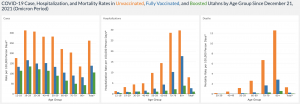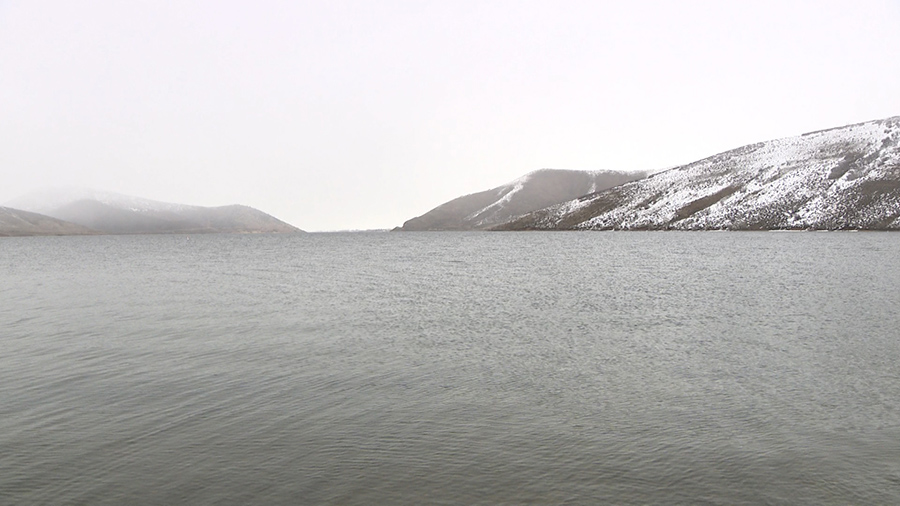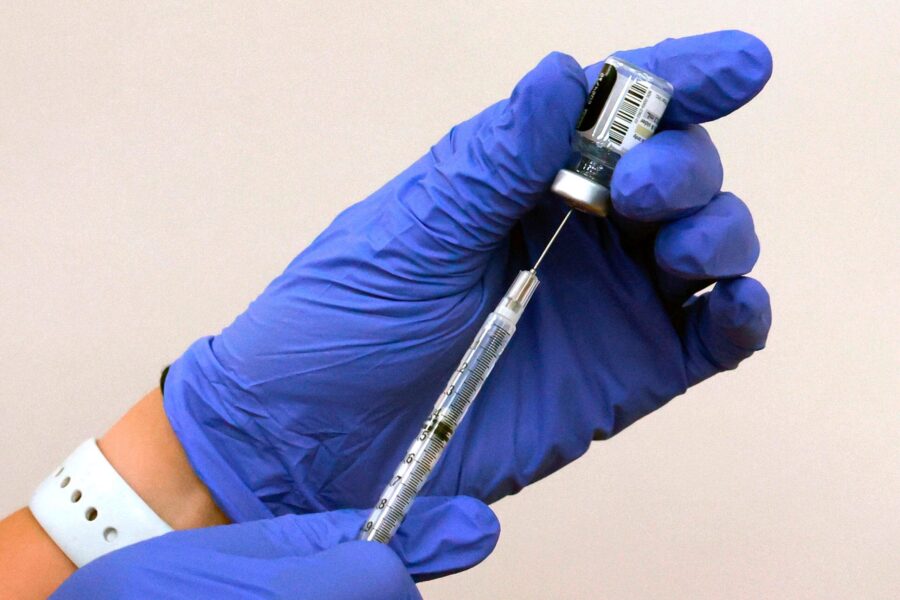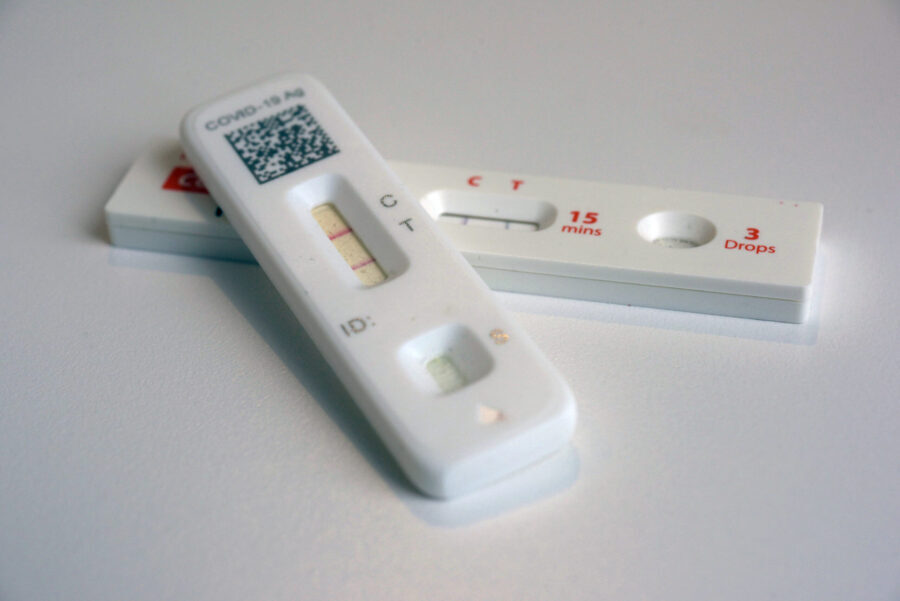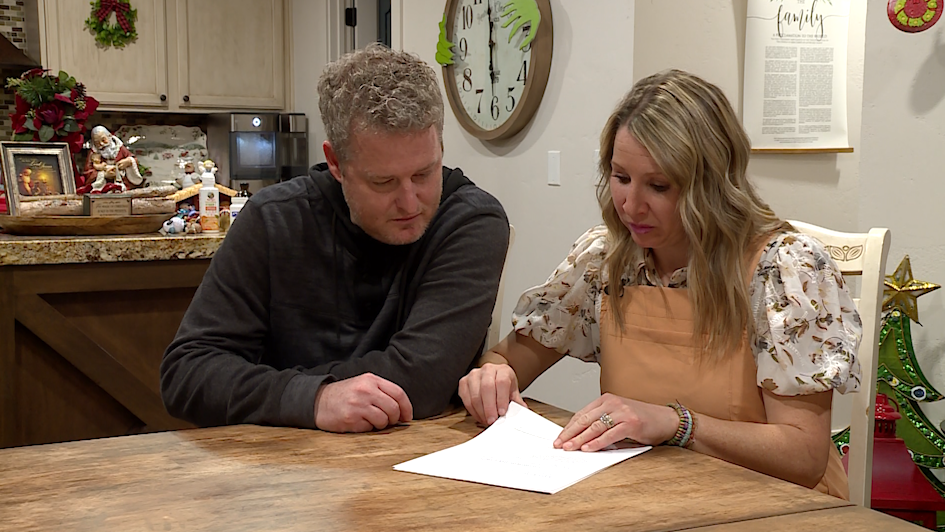Utah reports 244 COVID cases, 21 additional deaths
Mar 11, 2022, 1:43 PM
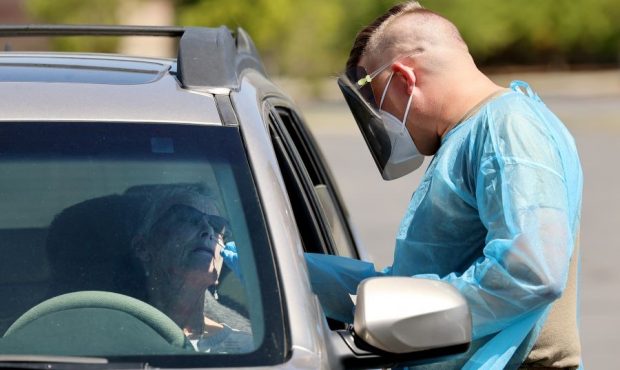
RaNae Bryantl receives a COVID-19 test from Utah National Guard Staff Sgt. Sorensen (no first name given) at the Maverik Center in West Valley City on Tuesday, July 6, 2021. (Scott G Winterton, Deseret News)
(Scott G Winterton, Deseret News)
SALT LAKE CITY — The Utah Department of Health on Friday said 21 more Utahns have lost their lives due to COVID-19 while 244 residents have tested positive for the virus since yesterday.
UDOH said nine of the 21 deaths reported Friday occurred before Feb. 11.
Of those 244 cases, 23 (11.11%) were in school-aged children:
- 11 cases in children ages 5-10
- 1 case in children ages 11-13
- 11 cases in children ages 14-17
Currently, 212 Utahns are in the hospital with confirmed cases of COVID-19 — a drop from Thursday’s count of 223 and the state’s lowest count since July 11 (217).
Hospitalizations
Of the 212 people currently hospitalized with confirmed cases of COVID-19, 48 of those people are in intensive care units — an increase of seven from Thursday.
Utah’s ICUs were 71.4% full Friday and the ICU beds in Utah’s 16 referral centers, where the majority of COVID-19 patients are treated, were 75.1% full — below the state’s utilization warning mark of 77%.
Just eight percent of Utah’s ICU usage is due to COVID-19 patients.
“At about 69% overall ICU utilization, ICUs in Utah’s major hospitals with the ability to provide best care for COVID-19 patients begin to reach staffing capacity,” UDOH officials said. “Seventy-two percent use among all hospitals and 77% in referral center hospitals creates major strains on the health care system. When 85% capacity is reached, Utah will be functionally out of staffed ICU beds, indicating an overwhelmed hospital system.”
Vaccinations
As of Friday, 4,972,374 vaccine doses have been given in Utah — an increase of 2,252 since yesterday.
Over 1.99 million Utahns are now fully vaccinated, over 2.24 million have received at least one dose of a vaccine and over 880,000 have received a booster dose.
Over 6.12 million vaccine doses have been delivered to the Beehive State.
Data includes the total number of people who have received a booster dose, a breakdown by age (over 65 and under 65), and data on the type of booster dose people have received.
Children ages 5-11 are eligible to receive a smaller dose of Pfizer’s COVID-19 vaccine, which has been fully approved by the FDA and CDC, and appointments are available across the state. Moderna’s vaccine has also received full U.S. approval.
All Utahns age 18 and older, who received their second dose of the Pfizer or Moderna COVID-19 vaccine more than five months ago, or a Johnson & Johnson vaccine more than two months ago, are also eligible for a booster shot.
Three studies released by the CDC offer more evidence that COVID-19 vaccines are standing up to the omicron variant, at least among people who received booster shots.
Teens ages 12 to 17 are also eligible for a Pfizer booster dose.
The FDA and CDC have approved booster doses for Americans and urged those age 50 and older to seek one.
Vaccinated and booster vs. unvaccinated risk ratios
In the last 28 days, people who are unvaccinated are at 19.4 times greater risk of dying from COVID-19, 5.8 times greater risk of being hospitalized due to COVID-19, and 2.1 times greater risk of testing positive for COVID-19 than boosted people.
In the last 28 days, people who are unvaccinated are at 8 times greater risk of dying from COVID-19, 2.1 times greater risk of being hospitalized due to COVID-19, and 1.9 times greater risk of testing positive for COVID-19 than vaccinated people.
Testing
UDOH reports 4,965,893 people have been tested — 3,208 more since yesterday. Of those, 925,519 Utahns have tested positive for COVID-19 — an increase of 244 new cases.
The rolling seven-day average for positive tests was 194 — down from 282 on Monday and 438 the Monday before.
The rolling seven-day average for percent positivity of “people over people” dropped to 7.4% while the rolling seven-day average for percent positivity of “tests over tests” dropped to 4.7%.
Deaths
The virus has killed 4,539 of the state’s residents. UDOH said nine of the following deaths, which were reported Friday, occurred before Feb. 11:
- Female, between 45-64, Davis County resident, not hospitalized at time of death
- Female, older than 85, Utah County resident, long-term care facility resident
- Male, between 65-84, Salt Lake County resident, not hospitalized at time of death
- Female, between 45-64, Salt Lake County resident, not hospitalized at time of death
- Female, between 65-84, Davis County resident, long-term care facility resident
- Female, between 65-84, Washington County resident, not hospitalized at time of death
- Male, older than 85, Davis County resident, not hospitalized at time of death
- Male, between 65-84, Utah County resident, not hospitalized at time of death
- Female, between 65-84, Salt Lake County resident, not hospitalized at time of death
- Male, between 45-64, Washington County resident, not hospitalized at time of death
- Male, older than 85, Utah County resident, hospitalized at time of death
- Female, between 65-84, Sevier County resident, long-term care facility resident
- Female, older than 85, Davis County resident, long-term care facility resident
- Female, older than 85, Box Elder County resident, not hospitalized at time of death
- Male, between 65-84, Cache County resident, hospitalized at time of death
- Female, between 65-84, Salt Lake County resident, not hospitalized at time of death
- Male, older than 85, Wayne County resident, not hospitalized at time of death
- Female, older than 85, Wasatch County resident, long-term care facility resident
- Male, older than 85, Salt Lake County resident, long-term care facility resident
- Male, between 65-84, Box Elder County resident, hospitalized at time of death
- Female, older than 85, Utah County, hospitalized at time of death
Nationwide Numbers
Coronavirus Resources
- For more information about COVID-19 from Utah’s Department of health visit: coronavirus.utah.gov/*
- For more data from UDOH visit: coronavirus.utah.gov/case-counts/.
- To see how Utah calculates deaths for COVID-19, and other deaths in Utah, visit coronavirus.utah.gov/covid-19-deaths/.
- For more on the science and research from the U.S. Center of Disease Control visit: cdc.gov/coronavirus/2019-ncov/science/science-and-research.html.
- To view aggregated global COVID-19 statistics visit: worldometers.info/coronavirus/
- To view a county-by-county look at COVID-19 in the United States visit: coronavirus.jhu.edu/us-map.
Have you or a family member been affected by coronavirus issues in Utah? KSL wants to hear from you. Contact KSL by emailing social@ksl.com.
Click here to sign up for a vaccine and here to see how Utah’s vaccine rollout is progressing.
The latest COVID-19 stories from KSL can be found here.
How do I prevent it?
The CDC has some simple recommendations, most of which are the same for preventing other respiratory illnesses or the flu:
- Get vaccinated and a booster dose if it has been more than five months (Pfizer/Moderna) since your second dose or two months (J&J) since your first
- Avoid close contact with people who may be sick
- Avoid touching your face
- Stay home when you are sick
- Cover your cough or sneeze with a tissue and then throw the tissue in the trash
- Wash your hands often with soap and water for at least 20 seconds, especially after going to the bathroom, before eating, and after blowing your nose, coughing or sneezing. Always wash your hands with soap and water if your hands are visibly dirty.
- If soap and water are not readily available, use an alcohol-based hand sanitizer with at least 60% alcohol.
The CDC recommends Americans should continue wearing face coverings in public settings where other social distancing measures are difficult to maintain (e.g., grocery stores and pharmacies).
People, including children older than 2, should wear a mask in indoor public places if they are:
- Not fully vaccinated
- Fully vaccinated and in an area with substantial or high transmission
- Fully vaccinated and with weakened immune systems
- In general, you do not need to wear a mask in outdoor settings.
- In areas with high numbers of COVID-19 cases, consider wearing a mask in crowded outdoor settings and for activities with close contact with others who are not fully vaccinated.
Updated isolation guidelines can be found here.


